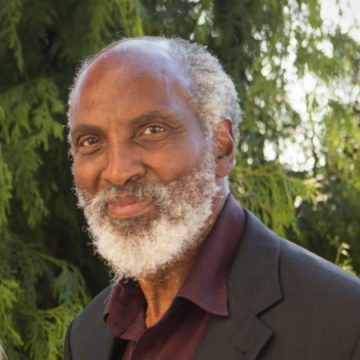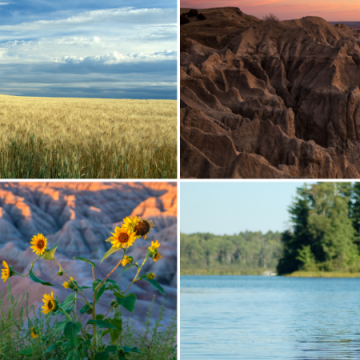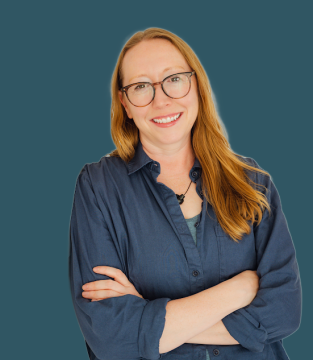Lessons Learned from the Community Creativity Cohort
DATE
March 8, 2017
INCLUSIVE PROGRAM STRATEGY DEVELOPMENT
In 2015 the Bush Foundation took a unique approach to develop a new program strategy: we created a one-time grant program to provide operating support to exemplary organizations while involving them in the design of a new ongoing program. We did this through the Community Creativity Cohort, a learning cohort of 16 regional organizations who informed our future arts and culture strategy—work that has since become our Community Creativity Strategic Initiative.
Learning cohorts are powerful tools for program strategy development; this learning paper outlines the key steps in our process, as well as the strengths and challenges we experienced. We believe this was a powerful and effective way to not only develop a program to serve the needs of our region but to also build strong relationships with community organizations in the process.
This paper will focus on a process that we believe could be used across a wide array of issue areas to inform program design. It will not go deep into the Community Creativity strategy that emerged from this process.
Background
Founded in 1953, the Bush Foundation invests in great ideas and the people that power them. Our funding area includes North Dakota, South Dakota, Minnesota and the 23 Native nations that share the geography.
In 2014 we wanted to increase our focus on art and culture. We also wanted to do it in a way that would advance our overall purpose of seeking to inspire and support creative problem solving—across and within sectors—to make the region better for everyone. We believed the arts could play a key role in addressing community challenges, but recognized that we didn’t have the expertise we needed to launch a new strategy inside the walls of the Foundation. We had a lot to learn.
Why a Learning Cohort?
We knew we needed to have heavy involvement from external partners for us to create the best possible strategy. We started by having informal conversations with artists, arts organizations, community leaders, staff and our board. We then wanted to go deeper to understand the aspirations and challenges of the nonprofit leaders working in the field, so we considered several common approaches to inform questions and set strategy. For instance, we could hire a professional consultant to research the issue, visit with arts funders or convene a group of regional experts. As our exploration continued it became clear that our values would need to play an important, guiding role in our work. This eventually led us to think differently about how to approach developing our new strategy and we came up with idea of creating a learning cohort that was also a grant program.
Building the Community Creativity Cohort
As we began the process of creating the Community Creativity Cohort, our dilemma was how to do it in a way that truly lived our values.
First, we needed a transparent and equitable way to decide which organizations had the opportunity to influence us by being members of the Community Creativity Cohort. Getting this right was important both for making sure we had a diverse enough set of influencers to get to a good strategy and for helping to build credibility for that strategy. For us, this meant investing a lot of time and energy in a selection process, with outside advisors, to get the best possible cohort. Key aspects of the selection process included:
- Open grant program. We ran an open, competitive application process and received a total of 184 applications. Through these applications, we learned a great deal about the breadth and depth of creative problem solving work happening in the region.
- Selection panel of local experts. To help select those arts and non-arts organizations who were the best models of meaningfully engaging people in the arts and integrating the arts into public life, we identified and hired an expert panel of leaders who work at the intersection of art and community. They reviewed applications and made recommendations. This part of the process gave us direct insight into what regional experts and leaders in the arts thought was important.
- Diverse cohort. We selected a group of 16 organizations to participate in the Community Creativity Cohort—including large and small, rural and urban, arts and non-arts, emerging and well-established, mainstream organizations and those grounded in communities that have been historically marginalized. The newly-selected cohort sent a clear message to the broader community, both about who we recognized as high-impact organizations, and signaling what might be expected from our future program strategy.
We also wanted to do our best to mitigate the power dynamics that get in the way of foundation-nonprofit interactions. To us, that meant recognizing the value of the nonprofit leaders’ expertise and their time with a significant unrestricted grant. It also meant creating a cohort-based learning experience designed with the intent of being mutually beneficial. While our objective was to get perspectives to advance our thinking, we structured the program to balance our selfish interests with sessions that met expressed needs of the participating organizations. Components of the Community Creativity Cohort program included:
- Unrestricted grant. Each organization that was selected to participate in the Community Creativity Cohort received a $100,000 unrestricted grant.
- Writing prompts. Each cohort participant was asked to respond to six writing prompts over the course of six months. The prompts were specific questions designed to help us learn as well as to inspire thought and discussion within each participating cohort organization. Several members used these writing prompts to guide discussions with their own boards and staff. In addition to seeking information that could inform our program strategy development, we also used the writing prompts to help us plan the most responsive, impactful convenings possible.
- Convenings. Our original plan was to develop two convenings that would be useful to both the cohort participants and to our strategy development. The convenings gave cohort participants an opportunity to connect and build trust directly with each other and introduced cohort participants to experts and guest speakers from across the country to inspire and equip them with new skills and ideas. Cohort members found so much value in the convenings that they asked for a third gathering. In January of 2016, we hosted another gathering and shared what we learned from them and how it was informing our program strategy.
Benefits
There were several benefits to using this approach. First, we learned a great deal from the application and selection process, the input the cohort provided at the convenings and through their journals and reports. The diverse perspectives and collective wisdom that were shared with us placed us in the best position to build the Community Creativity Strategic Initiative. As we continue to grow the Initiative today, insights gained from the cohort serve us well.
The cohort helped us build credibility with our Board. Cohort input was a way for us to clearly demonstrate that we weren’t just creating a program strategy by sitting in meeting rooms at the Foundation office. We literally had the voices of grantees in our head as we developed the Community Creativity Strategic Initiative.
Finally, using this kind of learning cohort process helped us build credibility with the broader community. We communicated how we were developing program strategy through the help of community organizations from throughout the region. We also provided public updates as our strategy took shape. Having a cadre of community organizations partners who understand and are willing to share with their peers what we think and where we are going has also been incredibly helpful.
The “Elephant in the Room” – Building Trust
At first, the idea of bringing a group of community organizations together and asking them what they needed seemed relatively simple. However, because of the complicated nature of grantseeking, including the inherent power differentials between funders and grantees, our approach had to be transparent and thoughtful. For our strategy development work to succeed, we would have to build trust on many different levels.
Cohort participants needed to trust that the Foundation was ready to listen to them, to support their participation and value their honest feedback. Sometimes foundations are guilty of asking community organizations and other experts to meet with us, inform us and attend meetings for our benefit without any assurances that they will be funded or otherwise compensated for their time and expertise. We tried to mitigate this by providing each organization with an unrestricted grant and organizing convenings and reporting so that both organizations and the Foundation could benefit. We also made an intentional, regular effort to report our learning out to the group to make sure we heard members correctly. The importance of trust building cannot be understated: Change moves at the speed of trust.
Cohort members also needed to trust one another enough to be willing to share their organizational successes and their challenges. We addressed this by first giving all organizations the same size grant up front; this meant they were not in competition for grant dollars, there was no sense that some organizations got more than others and all organizations had sufficient funds for them to fully participate. We hosted convenings designed specifically for people to get to know one another—both as organizations and as human beings. We also selected organizations based on how grounded they were in their communities and in their values, and their willingness to be authentic and honest with themselves, us and others.
Key Lessons Learned – What Worked Well
As we reflect on the experience of the Community Creativity Cohort, we believe a few key things helped this process go well.
CURATING THE COHORT
We approached selecting grantees differently than we might in a normal grantee selection process. We didn’t simply want organizations that were doing great work, we also wanted organizations that would be able to contribute to the learning cohort. First, we considered if applicants were exemplars at meaningfully engaging people in arts and/or meaningfully integrating arts into public life. We looked for organizations that were doing this well, but also those that were transparent about challenges and stayed committed to the work even when things got tough. Second, we considered if organizations would be willing to share their current learning with the group. We looked for those organizations with a learning mindset and even considered what individuals they were proposing to join the cohort convenings. Third, to ensure that the cohort brought a diverse set of perspectives to the table, we sought diversity among participants on a number of dimensions, including art discipline, organization type, size of organization, and demographics and geography of communities served. That process showed us what we should be thinking about and looking for, as well as helped us build champions for our work and this approach.
FOCUS ON RELATIONSHIP BUILDING
Across our programs, the Bush Foundation strongly believes in the power of individuals to make great things happen. And to do this, individuals need to be inspired, equipped and connected to others. We thought about this a lot as we designed the cohort convenings. We understood this needed to be more than a way for organizations to pass insights on to us at the Foundation. We saw this as an opportunity to make meaningful connections, not just between the Foundation and organizations, but also between participating organizations. The convenings included time for connecting and relationship building activities. We received very positive feedback from grantees on how much they valued the opportunity to connect with and learn from each other. We’ve been encouraged by the ongoing collaboration we’ve seen between grantees coming out of the cohort.
CONVENING DESIGN THAT ENABLED RECIPROCAL LEARNING
It was important to us that the experience be mutually beneficial. We used an external facilitator, guest speakers and other leaders for the convenings—people who knew the field of arts and culture well and could engage with and challenge the participants in a meaningful way. Participants reported that these sessions pushed their thinking, and we benefited by hearing their discussions on the topics. The facilitator led large group discussions, small group activities, gallery walks and written exercises, which enabled participants with different learning styles and participation preferences to contribute their perspectives and insights.
What Didn’t Work Well
Throughout the process, we sought ways we could be more effective. If we were to do this again, we’d do a few things differently.
CLARIFY EXPECTATIONS
Some cohort participants were confused or frustrated about their role and the extent to which they would be helping to inform the Foundation’s strategy. Some envisioned being much more involved in crafting Foundation strategy documents. We could have been much clearer from the outset about how participant viewpoints and input would be involved, and what informing-strategy would have looked like in this context.
KEEP THE GOAL FRONT AND CENTRAL
In this case, we were convening a group of organizations that were exemplars in integrating art into public life. In our first convening, we met in a plain room and incorporated very little in the way of art. Participants let us know they left that experience uninspired, and we responded. We incorporated much more creativity in our second and third convenings. For instance, we held the meetings and evening dinner at arts and cultural institutions, featured performing artists and encouraged cohort members to share their own art.
TECHNICAL SUPPORT FOR UNRESTRICTED FUNDS
As noted, we provided a flexible grant for organizations to use to advance their work. This worked well for many of the grantees, but some struggled with how to best deploy this one-time capital. When it came to operational budgets, the grantees varied significantly in scale. To some of them, the $100,000 grant was a small fraction of their annual operating budget, but several of the participants were quite small, making $100,000 a very significant infusion of capital. Nearly two years after the grant period, over half of the organizations had not expended their grant money and were still working on their plan to do so. If we were to do a similar program, we’d think more carefully about how to provide technical assistance.
What’s Next
We are building out our Community Creativity portfolio and continue to benefit from what we learned from the Community Creativity Cohort. We are very excited about the potential impact this work can have across the region.
We heard from participants about the value to convene on the topic of integrating arts into problem solving. We will continue to host grantee and partner convenings to strengthen the field together.
Will we use a learning cohort model for program development again? Almost certainly yes! While we don’t intend to create new programs or strategies each year, we think there’s great value and opportunity to integrate grantee insights into our work in this way.
Continue reading
-

News
Power of Bridging Event
Mark your calendars for a special community event with john a. powell! Thanks to our friends at MPR News, we'll be hosting john at the Fitzgerald Theater on December 2 and hope you can join us!
-

News
Celebrating the 2025 Bush Prize honorees
Learn more about the 2025 Bush Prize honorees who are helping to make our region better for everyone!
-

News
Welcome to new Bush staff members
We are celebrating some new Bush colleagues and hope you get to meet them soon!